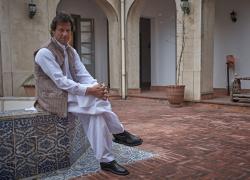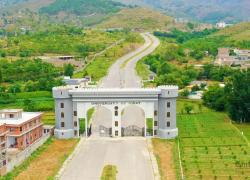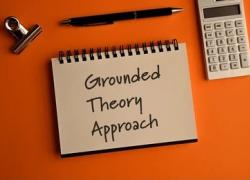Uncovering the Past: 04 Practical Examples of Historical Research Design
A hypothetical example of a historical research design could be a study that examines the causes and consequences of a specific historical event, such as the impact of the Industrial Revolution on urbanization in the 19th century.
The research design would involve collecting and analyzing historical documents, records, and artifacts from the period, including census data, newspapers, government reports, and personal accounts. You might explore how the Industrial Revolution led to significant shifts in population patterns, economic structures, and social dynamics in urban areas. The study could involve a longitudinal analysis, tracing changes over time and considering various factors that influenced the urbanization process during that historical period. The goal would be to contribute to a deeper understanding of the historical context, the interplay of different forces, and the lasting effects of the Industrial Revolution on urban development.
This blog post showcases this example with a step-by-step guide to explain how to develop your historical research design in a systematic and logical manner:
Example of a Historical Research Design?
Now let’s outline a step-by-step approach for a historical research design to uncover the past using the example of examining the impact of the Industrial Revolution on urbanization in the 19th century:
- Define Research Questions:
- Clearly articulate the research questions that address the impact of the Industrial Revolution on urbanization. For example, “How did industrialization contribute to changes in urban population patterns and social structures during the 19th century?”
- Clearly articulate the research questions that address the impact of the Industrial Revolution on urbanization. For example, “How did industrialization contribute to changes in urban population patterns and social structures during the 19th century?”
- Literature Review:
- Conduct a thorough literature review to understand existing scholarship on the Industrial Revolution and its effects on urbanization. Identify gaps in knowledge and areas where your research can contribute.
- Conduct a thorough literature review to understand existing scholarship on the Industrial Revolution and its effects on urbanization. Identify gaps in knowledge and areas where your research can contribute.
- Select Historical Context:
- Specify the time period and geographical focus for your study. In this case, choose a specific region and decade(s) within the 19th century when the Industrial Revolution had a significant impact on urban areas.
- Specify the time period and geographical focus for your study. In this case, choose a specific region and decade(s) within the 19th century when the Industrial Revolution had a significant impact on urban areas.
- Identify Data Sources:
- Determine the types of historical data sources relevant to your research questions. This could include census data, government reports, newspapers, diaries, letters, maps, and other primary sources from the chosen time and place.
- Determine the types of historical data sources relevant to your research questions. This could include census data, government reports, newspapers, diaries, letters, maps, and other primary sources from the chosen time and place.
- Access and Collect Data:
- Obtain access to relevant archives, libraries, and digital repositories containing historical documents. Systematically collect data from selected sources, ensuring that the chosen materials align with the research questions.
- Obtain access to relevant archives, libraries, and digital repositories containing historical documents. Systematically collect data from selected sources, ensuring that the chosen materials align with the research questions.
- Data Coding and Analysis:
- Code and organize the collected data, categorizing information related to urbanization, demographic changes, economic shifts, and societal impacts. Use qualitative and quantitative analysis methods as appropriate to draw patterns and trends from the historical data.
- Code and organize the collected data, categorizing information related to urbanization, demographic changes, economic shifts, and societal impacts. Use qualitative and quantitative analysis methods as appropriate to draw patterns and trends from the historical data.
- Consider Multiple Perspectives:
- Take into account diverse perspectives by considering the experiences of different social groups (e.g., workers, industrialists, urban residents) during the Industrial Revolution. This helps provide a comprehensive understanding of the historical context.
- Take into account diverse perspectives by considering the experiences of different social groups (e.g., workers, industrialists, urban residents) during the Industrial Revolution. This helps provide a comprehensive understanding of the historical context.
- Contextualize Findings:
- Interpret the findings within the broader historical context. Examine the interplay of economic, political, and social factors that influenced urbanization during the Industrial Revolution.
- Interpret the findings within the broader historical context. Examine the interplay of economic, political, and social factors that influenced urbanization during the Industrial Revolution.
- Draw Conclusion:
- Based on the analysis, draw conclusions regarding how the Industrial Revolution impacted urbanization in the specified time and place. Consider the complexities, contradictions, and long-term effects revealed by the historical data.
- Based on the analysis, draw conclusions regarding how the Industrial Revolution impacted urbanization in the specified time and place. Consider the complexities, contradictions, and long-term effects revealed by the historical data.
- Communicate Results:
- Share the results through academic publications, presentations, or other appropriate channels. Clearly communicate the contributions of the study to the understanding of historical processes, and discuss implications for broader historical scholarship.
- Share the results through academic publications, presentations, or other appropriate channels. Clearly communicate the contributions of the study to the understanding of historical processes, and discuss implications for broader historical scholarship.
This step-by-step approach provides a structured framework for conducting historical research on the impact of the Industrial Revolution on urbanization. Adjustments can be made based on the specific nuances of the research topic and available historical sources.
Example of Historical Research Design in Education?
Let’s consider another example of a historical research design in education that explores the evolution of educational policies for gender equality in a Pakistan over the last 75 years.
- Define Research Questions:
- Formulate research questions such as “How have educational policies addressing gender equality evolved in Pakistan since independence to the present?”
- Formulate research questions such as “How have educational policies addressing gender equality evolved in Pakistan since independence to the present?”
- Literature Review:
- Conduct a literature review to understand existing scholarship on gender and education, policy development, and historical perspectives on educational reforms in the chosen country.
- Conduct a literature review to understand existing scholarship on gender and education, policy development, and historical perspectives on educational reforms in the chosen country.
- Select Historical Context:
- Specify the time period and geographical focus. For instance, examine the evolution of policies related to gender equality in education in Pakistan from 1947 to the present day.
- Specify the time period and geographical focus. For instance, examine the evolution of policies related to gender equality in education in Pakistan from 1947 to the present day.
- Identify Data Sources:
- Identify historical documents, government reports, policy statements, educational publications, and relevant scholarly works as primary sources. Archival records, official publications, and interviews with key stakeholders may also be considered.
- Identify historical documents, government reports, policy statements, educational publications, and relevant scholarly works as primary sources. Archival records, official publications, and interviews with key stakeholders may also be considered.
- Access and Collect Data:
- Obtain access to archives, libraries, and databases containing historical documents related to educational policies and gender equality. Collect and document relevant information from primary sources.
- Obtain access to archives, libraries, and databases containing historical documents related to educational policies and gender equality. Collect and document relevant information from primary sources.
- Data Coding and Analysis:
- Code and analyze the collected data, categorizing policy changes, key initiatives, and shifts in educational practices related to gender equality. Use a historical lens to interpret the evolving narratives in educational policies.
- Code and analyze the collected data, categorizing policy changes, key initiatives, and shifts in educational practices related to gender equality. Use a historical lens to interpret the evolving narratives in educational policies.
- Consider Multiple Perspectives:
- Consider the perspectives of various stakeholders, including policymakers, educators, students, and advocacy groups. Analyze how different societal influences and cultural shifts have shaped educational policies over time.
- Consider the perspectives of various stakeholders, including policymakers, educators, students, and advocacy groups. Analyze how different societal influences and cultural shifts have shaped educational policies over time.
- Contextualize Findings:
- Contextualize the findings within broader historical, social, and cultural contexts. Examine how political, economic, and social changes have influenced the development and implementation of gender-related educational policies.
- Contextualize the findings within broader historical, social, and cultural contexts. Examine how political, economic, and social changes have influenced the development and implementation of gender-related educational policies.
- Draw Conclusions:
- Draw conclusions about the trends, challenges, and successes in the evolution of educational policies for gender equality. Identify key turning points, policy influencers, and the impact of these policies on educational outcomes.
- Draw conclusions about the trends, challenges, and successes in the evolution of educational policies for gender equality. Identify key turning points, policy influencers, and the impact of these policies on educational outcomes.
- Communicate Results:
- Share the research results through academic publications, conferences, or educational forums. Discuss the implications of the historical findings for current educational policies and practices related to gender equality.
- Share the research results through academic publications, conferences, or educational forums. Discuss the implications of the historical findings for current educational policies and practices related to gender equality.
This historical research design in education provides insights into the changing landscape of policies addressing gender equality in Pakistan’s educational system. It contributes to a deeper understanding of how historical contexts have shaped the development of educational policies over time.
Example of Historical Research Design in healthcare?
An example of a historical research design in healthcare could involve investigating the evolution of public health interventions in response to infectious disease outbreaks.
Let’s consider a study focused on the historical development of vaccination programs in response to a specific infectious disease, such as polio in Pakistan from 1950 to the present.
- Define Research Questions:
- Formulate research questions such as “How have vaccination programs evolved in response to polio outbreaks, and what factors influenced their development over time?”
- Formulate research questions such as “How have vaccination programs evolved in response to polio outbreaks, and what factors influenced their development over time?”
- Literature Review:
- Conduct a literature review to understand the historical context of polio outbreaks, the development of vaccines, and the implementation of vaccination programs. Identify gaps in knowledge and areas where historical insights can contribute to current understanding.
- Conduct a literature review to understand the historical context of polio outbreaks, the development of vaccines, and the implementation of vaccination programs. Identify gaps in knowledge and areas where historical insights can contribute to current understanding.
- Select Historical Context:
- Specify the time period and geographical focus. For example, examine the evolution of polio vaccination programs from 1950 to the present with a focus on Pakistan.
- Specify the time period and geographical focus. For example, examine the evolution of polio vaccination programs from 1950 to the present with a focus on Pakistan.
- Identify Data Sources:
- Identify historical documents, medical records, government reports, vaccination campaigns, and relevant literature as primary sources. Archival records, newspaper articles, and interviews with key healthcare professionals involved in vaccination programs may also be considered.
- Identify historical documents, medical records, government reports, vaccination campaigns, and relevant literature as primary sources. Archival records, newspaper articles, and interviews with key healthcare professionals involved in vaccination programs may also be considered.
- Access and Collect Data:
- Obtain access to archives, libraries, and databases containing historical documents related to polio vaccination programs. Collect and document information on vaccine development, policy changes, public perceptions, and the impact of vaccination efforts.
- Obtain access to archives, libraries, and databases containing historical documents related to polio vaccination programs. Collect and document information on vaccine development, policy changes, public perceptions, and the impact of vaccination efforts.
- Data Coding and Analysis:
- Code and analyze the collected data, categorizing key events, policy changes, and the implementation of vaccination programs. Explore how scientific advancements, public health campaigns, and societal attitudes influenced the trajectory of polio vaccination efforts.
- Code and analyze the collected data, categorizing key events, policy changes, and the implementation of vaccination programs. Explore how scientific advancements, public health campaigns, and societal attitudes influenced the trajectory of polio vaccination efforts.
- Consider Multiple Perspectives:
- Consider the perspectives of healthcare professionals, policymakers, the public, and researchers involved in polio vaccination programs. Analyze how political, economic, and social factors influenced decision-making and program implementation.
- Consider the perspectives of healthcare professionals, policymakers, the public, and researchers involved in polio vaccination programs. Analyze how political, economic, and social factors influenced decision-making and program implementation.
- Contextualize Findings:
- Contextualize the findings within broader historical, public health, and medical contexts. Examine how global and local events, such as outbreaks and scientific discoveries, shaped the development and implementation of vaccination programs.
- Contextualize the findings within broader historical, public health, and medical contexts. Examine how global and local events, such as outbreaks and scientific discoveries, shaped the development and implementation of vaccination programs.
- Draw Conclusions:
- Draw conclusions about the successes, challenges, and critical turning points in the historical development of polio vaccination programs in Pakistan. Identify factors that facilitated or hindered the success of these public health interventions.
- Draw conclusions about the successes, challenges, and critical turning points in the historical development of polio vaccination programs in Pakistan. Identify factors that facilitated or hindered the success of these public health interventions.
- Communicate Results:
- Share the research results through academic publications, conferences, or public health forums. Discuss the implications of historical findings for current vaccination programs, public health policy, and strategies for addressing infectious disease outbreaks.
- Share the research results through academic publications, conferences, or public health forums. Discuss the implications of historical findings for current vaccination programs, public health policy, and strategies for addressing infectious disease outbreaks.
This historical research design in healthcare provides insights into the dynamic evolution of vaccination programs in response to a specific infectious disease (polio), contributing to a broader understanding of the historical context of public health interventions in Pakistan.
Example of Historical Research Design in Nursing?
A practical example of a historical research design in nursing could involve examining the evolution of nursing education and its impact on the nursing profession over a specific period.
Let’s consider a study focused on the historical development of nursing education in Pakistan from 1990s to the present.
- Define Research Questions:
- Formulate research questions such as “How did nursing education evolve during the last thirty years, and what factors influenced its development and transformation?”
- Formulate research questions such as “How did nursing education evolve during the last thirty years, and what factors influenced its development and transformation?”
- Literature Review:
- Conduct a literature review to understand the historical context of nursing education, key educational reforms, and societal changes influencing nursing practices in Pakistan during the last thirty years.
- Conduct a literature review to understand the historical context of nursing education, key educational reforms, and societal changes influencing nursing practices in Pakistan during the last thirty years.
- Select Historical Context:
- Specify the time period and geographical focus. For example, examine the last thirty years time frame, with a particular emphasis on a specific region or country (i.e. Pakistan).
- Specify the time period and geographical focus. For example, examine the last thirty years time frame, with a particular emphasis on a specific region or country (i.e. Pakistan).
- Identify Data Sources:
- Identify historical documents, nursing education curricula, policy reports, institutional records, and relevant literature as primary sources. Archival materials such as education policies, interviews with retired nurse educators, and personal narratives may also be considered.
- Identify historical documents, nursing education curricula, policy reports, institutional records, and relevant literature as primary sources. Archival materials such as education policies, interviews with retired nurse educators, and personal narratives may also be considered.
- Access and Collect Data:
- Obtain access to archives, libraries, and databases containing historical documents related to nursing education. Collect and document information on changes in curriculum, pedagogical approaches, and the societal context that influenced nursing education during the chosen period.
- Obtain access to archives, libraries, and databases containing historical documents related to nursing education. Collect and document information on changes in curriculum, pedagogical approaches, and the societal context that influenced nursing education during the chosen period.
- Data Coding and Analysis:
- Code and analyze the collected data, categorizing key developments, policy changes, and shifts in nursing education. Explore how societal, technological, and healthcare system changes impacted the training of nurses during this historical period.
- Code and analyze the collected data, categorizing key developments, policy changes, and shifts in nursing education. Explore how societal, technological, and healthcare system changes impacted the training of nurses during this historical period.
- Consider Multiple Perspectives:
- Consider the perspectives of nurse educators, students, policymakers, and healthcare professionals involved in nursing education during the said period. Analyze how broader social, economic, and political factors influenced nursing education.
- Consider the perspectives of nurse educators, students, policymakers, and healthcare professionals involved in nursing education during the said period. Analyze how broader social, economic, and political factors influenced nursing education.
- Contextualize Findings:
- Contextualize the findings within broader historical, healthcare, and educational contexts. Examine how events such as healthcare reforms, new trends and advancements in medical technology shaped the development and transformation of nursing education in Pakistan.
- Contextualize the findings within broader historical, healthcare, and educational contexts. Examine how events such as healthcare reforms, new trends and advancements in medical technology shaped the development and transformation of nursing education in Pakistan.
- Draw Conclusions:
- Draw conclusions about the successes, challenges, and critical turning points in the historical development of nursing education during the last thirty years in Pakistan. Identify factors that influenced curriculum design, educational practices, and the preparation of nurses for evolving healthcare needs.
- Draw conclusions about the successes, challenges, and critical turning points in the historical development of nursing education during the last thirty years in Pakistan. Identify factors that influenced curriculum design, educational practices, and the preparation of nurses for evolving healthcare needs.
- Communicate Results:
- Share the research results through academic publications, nursing education conferences, or forums dedicated to historical perspectives in nursing. Discuss the implications of historical findings for contemporary nursing education and the ongoing professionalization of the nursing workforce.
- Share the research results through academic publications, nursing education conferences, or forums dedicated to historical perspectives in nursing. Discuss the implications of historical findings for contemporary nursing education and the ongoing professionalization of the nursing workforce.
This historical research design in nursing provides insights into the dynamic evolution of nursing education during the given historical period, contributing to a deeper understanding of the contextual factors that have shaped the education and training of nurses over time in Pakistan.


















